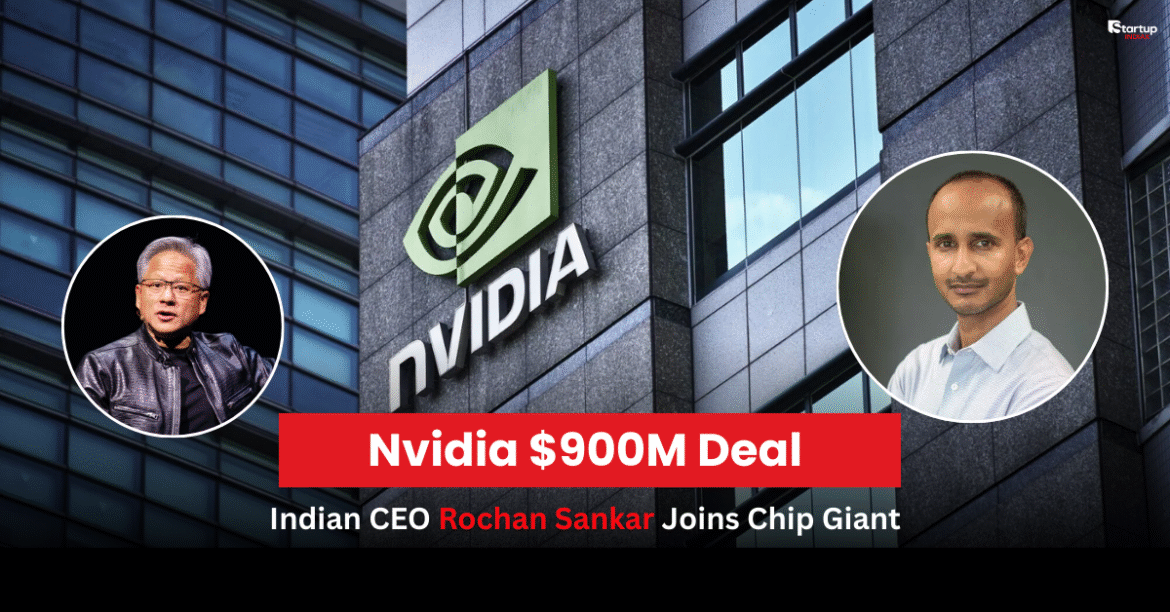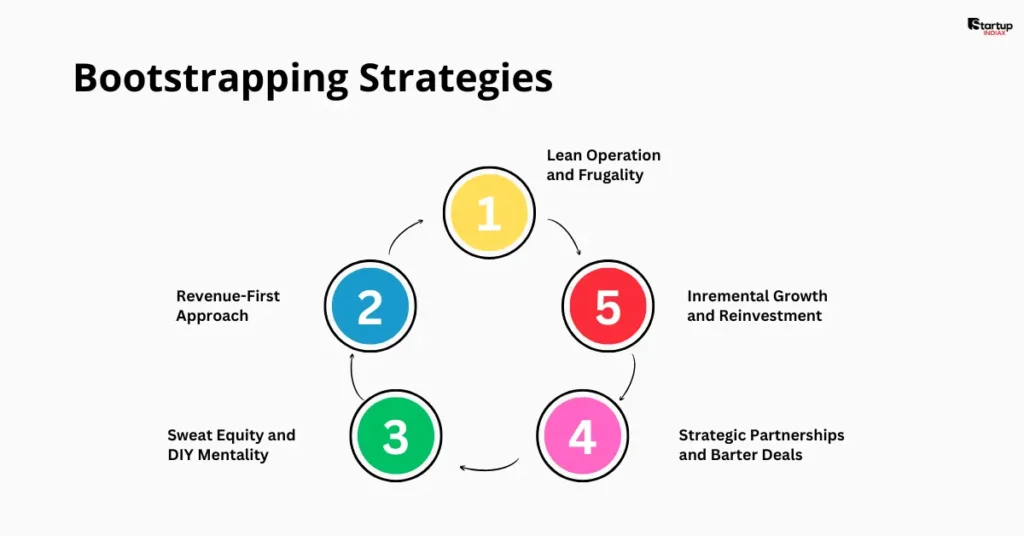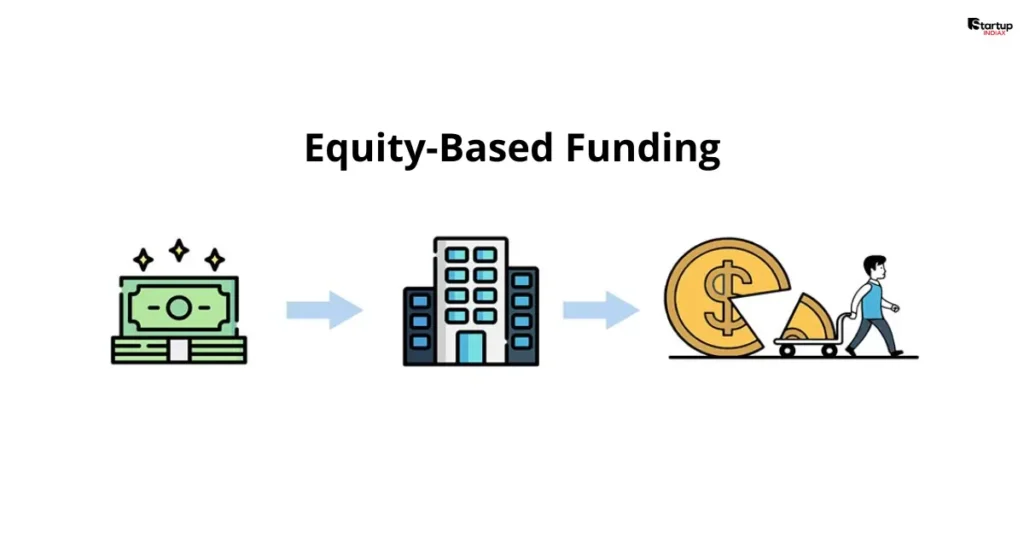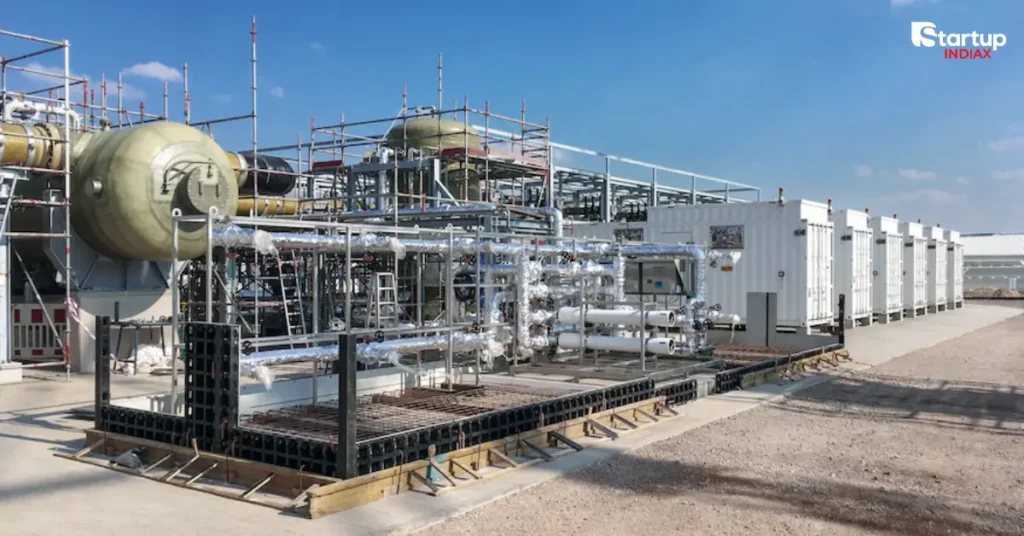- Nvidia $900M deal marks one of the largest acqui-hire transactions in AI history, bringing Indian-origin CEO Rochan Sankar and his entire Enfabrica team to the chip giant through a strategic cash-and-stock agreement.
- Rochan Sankar’s breakthrough GPU networking technology enables connecting over 100,000 GPUs into unified systems, solving critical AI infrastructure challenges that major tech companies desperately need for large-scale operations.
- Startup INDIAX explores how this landmark acquisition showcases the growing influence of Indian entrepreneurs in Silicon Valley and sets new benchmarks for AI hardware startup valuations.
In a stunning move that has sent shockwaves through Silicon Valley, Nvidia spent more than $900 million to hire Enfabrica CEO Rochan Sankar and other employees at the AI startup and to license the company’s technology. This massive Nvidia $900M deal represents one of the largest acqui-hire transactions in artificial intelligence history.
The timing couldn’t be more strategic. As AI companies race to build increasingly powerful systems, the ability to connect hundreds of thousands of GPUs efficiently has become the holy grail of infrastructure technology. Rochan Sankar, the Indian-origin entrepreneur at the center of this deal, has cracked this code.
What is the Nvidia $900M Deal with Rochan Sankar?
The deal, first reported by CNBC, was paid for using a mix of cash and stock, and closed last week. Rochan is now officially on Nvidia’s payroll. This isn’t just a typical acquisition – it’s a strategic talent grab that brings both cutting-edge technology and exceptional human capital under Nvidia’s umbrella.

The Nvidia $900M deal structure resembles high-profile acqui-hires previously orchestrated by Meta and Google, where the primary value lies in securing top-tier talent and their innovations. However, the scale of this transaction dwarfs most previous deals in the semiconductor space.
Key Deal Highlights:
- Total Value: Over $900 million in cash and stock
- Timeline: Deal closed in September 2024
- Scope: Includes CEO, key employees, and full technology licensing
- Strategic Focus: GPU networking and AI infrastructure scaling
Who is Rochan Sankar – The Indian-Origin CEO Behind Enfabrica?
Rochan Sankar brings a formidable 25-year track record in semiconductor technology. Prior to founding Enfabrica, he was Senior Director and leader of the Data Center Ethernet switch silicon business at Broadcom, where he defined and brought to market multiple generations of Tomahawk/Trident chips.

His educational credentials are equally impressive. Rochan holds a B.A.Sc. in Electrical Engineering from the University of Toronto and an MBA from the Wharton School, and has six issued patents. This combination of technical depth and business acumen positioned him perfectly to identify and solve one of AI’s biggest infrastructure challenges.
Before founding Enfabrica in 2019, Sankar spent nearly a decade at Broadcom, where he helped build industry-wide ecosystems including 25G Ethernet and disaggregated whitebox networking. His experience spans product management, chip architecture, and engineering across both startup and public semiconductor companies.
The Indian CEO Nvidia connection represents more than just a business transaction – it symbolizes the growing influence of Indian-origin entrepreneurs in shaping the future of AI technology.
How Did Enfabrica’s Technology Attract Nvidia’s Attention?
Enfabrica’s breakthrough lies in solving what many consider the most challenging problem in AI infrastructure: Enfabrica’s tech connects 100,000+ GPUs and supports Nvidia’s integrated AI systems. This capability is revolutionary for several reasons.
Traditional GPU networking approaches hit significant bottlenecks when trying to scale beyond thousands of units. Enfabrica’s technology introduces innovative networking protocols and hardware designs that enable seamless communication between massive GPU arrays.
The startup has raised $260 million in venture capital funding, indicating strong investor confidence in their approach. Major cloud providers and AI companies have been desperately seeking solutions to this exact problem, making Enfabrica’s technology incredibly valuable.
Technical Innovation Areas:
- Advanced GPU interconnection protocols
- Scalable networking architectures
- Low-latency communication systems
- Power-efficient designs for large-scale deployments
Why Did Nvidia Spend $900M on This Acquisition?
The Strategic Value of GPU Networking Technology
Nvidia’s massive investment reflects the critical importance of networking technology in the AI era. As companies build increasingly sophisticated AI models, they need to connect tens of thousands of GPUs to work as unified computing systems.
The $900M Nvidia acquisition secures exclusive access to technology that could give Nvidia a significant competitive advantage in the AI infrastructure market. This move positions them ahead of competitors like AMD and Intel in providing complete AI solutions.
With Nvidia’s recent focus on massive AI deployments – including their landmark $1.4 trillion AI cluster deal with the UAE – Sankar’s networking technology becomes even more critical. These large-scale projects require exactly the kind of GPU interconnection solutions that Enfabrica has developed.
Current AI training runs require enormous computational resources. Major language models need thousands of GPUs working in perfect synchronization. Any networking bottleneck can dramatically slow down training times and increase costs.
Competition with Tech Giants Like Meta and Google
The deal also reflects the intense competition for AI talent and technology. Meta, Google, Amazon, and Microsoft are all racing to build the most advanced AI infrastructure. By securing Sankar’s team and technology, Nvidia prevents competitors from gaining access to this breakthrough networking solution.
Startup INDIAX has observed this trend accelerating across Silicon Valley, where acqui-hire deals are becoming increasingly common and valuable. The competition for AI expertise has driven valuations to unprecedented levels.
What Does This Mean for Indian Entrepreneurs in Silicon Valley?
The Rochan Sankar Nvidia deal sends a powerful message about the value of Indian technical talent in Silicon Valley. This transaction joins other high-profile successes by Indian-origin entrepreneurs in the AI and semiconductor sectors.
Indian entrepreneurs have historically played crucial roles in Silicon Valley’s tech ecosystem, but the scale of this deal represents a new level of recognition and valuation. It demonstrates that Indian-founded startups can command premium valuations when they develop truly innovative technologies.
Impact on Indian Startup Ecosystem:
- Increased investor interest in Indian-founded AI startups
- Higher valuation expectations for breakthrough technologies
- Enhanced credibility for Indian entrepreneurs in Silicon Valley
- Attraction of more Indian talent to AI hardware ventures
This success story will likely inspire more Indian engineers and entrepreneurs to pursue ambitious AI infrastructure projects, knowing that the market recognizes and rewards true innovation.
How Will This Deal Impact Nvidia’s AI Infrastructure Business?
Nvidia’s acquisition of Enfabrica’s technology and team significantly strengthens their position in the AI infrastructure market. The company can now offer more comprehensive solutions that address both computational power and networking challenges.
The integration of Enfabrica’s technology into Nvidia’s product portfolio will likely result in new offerings that combine GPUs with advanced networking capabilities. This could create more compelling solutions for hyperscale cloud providers and enterprise AI deployments.
Expected Business Outcomes:
- Enhanced AI training and inference capabilities
- Reduced time-to-market for large-scale AI deployments
- Stronger competitive position against Intel and AMD
- Higher margins on integrated solutions
Nvidia’s data center revenue has been growing rapidly due to AI demand. Adding breakthrough networking technology could accelerate this growth and expand their addressable market significantly.
What’s Next for Rochan Sankar at Nvidia?
The transaction brings Sankar to lead AI infrastructure networking at Nvidia, where his expertise will be crucial in developing next-generation solutions. His role will likely involve integrating Enfabrica’s technology into Nvidia’s broader product ecosystem.
Sankar’s appointment represents a significant vote of confidence from Nvidia’s leadership. Leading AI infrastructure networking at the world’s most valuable semiconductor company positions him to shape the future of AI computing at unprecedented scale.
His team from Enfabrica will work closely with Nvidia’s existing engineering groups to accelerate development of advanced networking solutions. This collaboration could result in breakthrough products that redefine AI infrastructure capabilities.
The Indian CEO Nvidia partnership exemplifies how technical expertise and entrepreneurial vision can create transformative value in the AI era.
Conclusion
The Nvidia $900M deal with Rochan Sankar represents more than just a business transaction – it’s a testament to the value of breakthrough innovation in AI infrastructure. As artificial intelligence continues reshaping industries worldwide, the entrepreneurs and technologies enabling this transformation command premium valuations.
Startup INDIAX will continue covering these landmark deals that showcase Indian entrepreneurial success in Silicon Valley. This story inspires countless engineers and founders working on the next generation of AI technologies.
What do you think about Nvidia’s massive investment in Indian AI talent? Share your thoughts in the comments below and explore more inspiring startup stories on Startup INDIAX.
Frequently Asked Questions
How much did Nvidia pay for Rochan Sankar and Enfabrica’s technology?
Nvidia spent over $900 million in cash and stock to hire Enfabrica’s CEO and team while licensing their AI networking technology.
What makes Enfabrica’s technology so valuable to Nvidia?
Enfabrica developed breakthrough networking solutions that can connect over 100,000 GPUs into unified systems, solving critical AI infrastructure scaling challenges.
Who is Rochan Sankar and what’s his background?
Rochan Sankar is an Indian-origin entrepreneur with 25+ years in semiconductor technology, previously Senior Director at Broadcom, with degrees from University of Toronto and Wharton School.
When did the Nvidia-Enfabrica deal close?
The transaction closed in September 2024, with Rochan Sankar now officially joining Nvidia’s team to lead AI infrastructure networking.
How much funding had Enfabrica raised before the acquisition?
Enfabrica raised $260 million in venture capital funding, demonstrating strong investor confidence in their GPU networking technology.
















